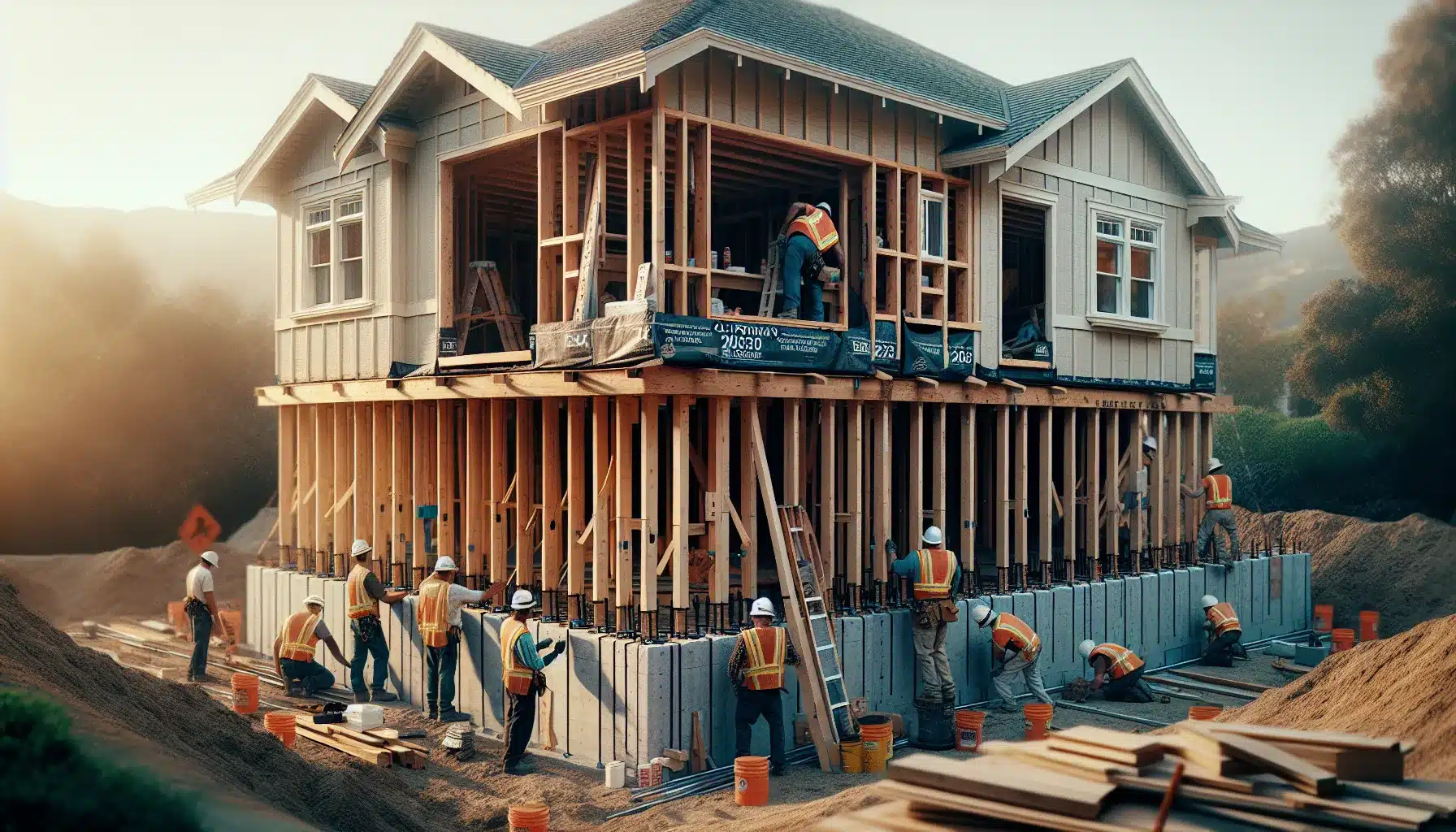
This post was last modified on July 7, 2025.
California’s 2025 Earthquake Retrofit Incentives aim to improve seismic safety for homeowners through expanded grant funding. If you’re eligible, you could receive up to $3,000 for key upgrades like foundation bolting. Understanding the eligibility requirements and types of support available is vital. With a focus on older homes in vulnerable areas, these incentives could greatly affect earthquake preparedness. So, what specific measures can you take to guarantee your home is resilient?
Overview of the EBB Grant Program
The Earthquake Brace + Bolt (EBB) program stands as a key initiative designed to enhance seismic safety for California homeowners. Administered by the California Residential Mitigation Program, this program highlights the importance of retrofitting homes to reduce earthquake damage.
With over $20 million in grant funding available, eligible homeowners can receive up to $3,000 for seismic retrofits. The application timeline is significant; registration typically opens for a limited period each year, allowing you to submit applications online through the EBB website. Approval notifications are communicated within weeks, ensuring a streamlined process.
The program’s impact is evident, with more than 28,500 homes retrofitted since its inception, markedly improving earthquake resilience across the state. Conducting due diligence is essential for homeowners to understand potential risks and ensure compliance with seismic safety regulations.
Eligibility Requirements and Income Qualifications
Understanding the eligibility requirements and income qualifications for the Earthquake Brace + Bolt (EBB) program is significant for homeowners considering seismic retrofitting.
To qualify, your residence must be in one of the 1,118 eligible ZIP Codes, primarily constructed before 1981. You must own and occupy the property, providing ownership documentation to verify this status.
The building shouldn’t already meet current retrofit standards and can’t be a rental or commercial property. While income restrictions are generally absent for standard grants, specific insurance-linked programs may have additional criteria.
Additionally, you must have an official notice indicating the need for retrofitting, ensuring compliance with local building codes for seismic safety. Furthermore, seeking a qualified surveyor can help ensure that your property assessment aligns with the necessary seismic retrofit requirements.
Types of Retrofit Measures Funded
Seismic retrofitting involves various measures designed to enhance a building’s resilience against earthquakes, and several of these are funded through the Earthquake Brace + Bolt (EBB) program.
Key retrofit measures include:
- Foundation Bolting: Secures older wood-framed homes to their foundations, minimizing separation during quakes.
- Cripple Wall Bracing: Reinforces short wooden walls under floors, preventing buckling and collapse during lateral shaking.
- Soft-Story Retrofits: Strengthens buildings with weak lower levels, averting pancake collapses in significant seismic events.
- Seismic Retrofit for Multi-Family Buildings: Enhances safety for residents in older multi-story structures through various reinforcement methods.
These measures collectively aim to reduce risks and improve overall safety in earthquake-prone areas, making retrofitting key for homeowners and communities alike. Additionally, the importance of understanding market dynamics cannot be overstated, as it influences the urgency and necessity for retrofitting in specific regions.
Financial and Technical Support Available
While maneuvering through the complexities of seismic retrofitting, you’ll find various financial and technical support options available to assist homeowners in enhancing their property’s resilience.
The Earthquake Brace + Bolt (EBB) grants can provide up to $3,000, while the Earthquake Soft-Story (ESS) Program offers up to $13,000 for specific retrofitting needs.
Educational workshops and webinars deliver significant knowledge on seismic risks and retrofit best practices, while advisory services help evaluate your home’s structural integrity.
Community outreach initiatives further promote awareness of these benefits, guiding you through the application processes.
With a commitment to reducing vulnerabilities, these programs collectively aim to bolster your home’s preparedness against potential earthquakes.
Importance of Retrofitting for Earthquake Preparedness
Retrofitting your home isn’t just a precaution; it’s a key investment in safety and stability.
With over 1 million California homes vulnerable to seismic events, retrofitting strengthens both individual and community resilience. Strengthening structures reduces risks of injury, property damage, and long-term displacement.
- Mitigates collapse risks in older, soft-story buildings
- Saves up to seven times the investment in avoided losses
- Preserves affordable housing and minimizes social disruption
- Enhances emergency response efficiency during seismic events
Frequently Asked Questions
Can I Apply for the Grant if I Live Outside the Eligible ZIP Codes?
You can’t apply for the grant if you live outside the eligible ZIP codes. Grant eligibility hinges on specific ZIP code restrictions, which guarantee funding targets the key areas for earthquake damage.
How Long Does the Application Process Typically Take?
The application timeline typically spans several months, with processing durations for permits taking 3 to 6 weeks. Following that, final approvals and incentive processing can add additional weeks, affecting your overall completion timeframe.
Are There Specific Deadlines for Completing the Retrofit After Receiving the Grant?
Yes, after receiving the grant, you’ll have a grant completion timeline of 12 weeks for initial steps. Retrofit project scheduling varies by jurisdiction, requiring adherence to specific deadlines to avoid penalties and guarantee compliance.
What Documentation Is Required to Apply for the Grant?
To apply for the grant, you’ll need to complete the application requirements, including required documents like proof of home ownership, contractor bids, a W-9 form, and photo documentation of vulnerable areas for assessment.
Can I Receive Multiple Grants for Different Properties?
You can apply for grants on multiple properties, but each must meet grant eligibility criteria individually. It’s important to check specific program guidelines for limitations regarding multiple grants for different properties in your area.




